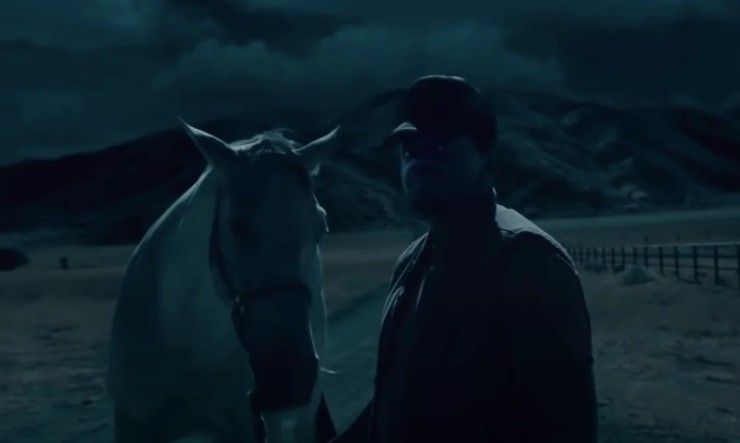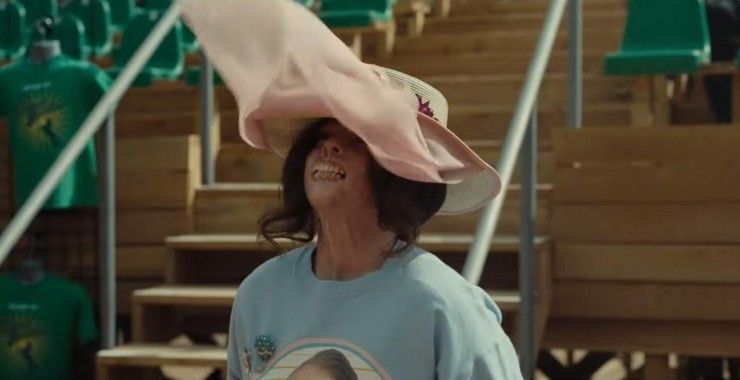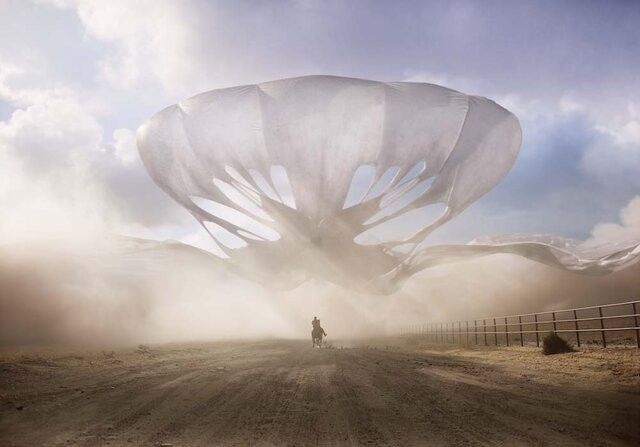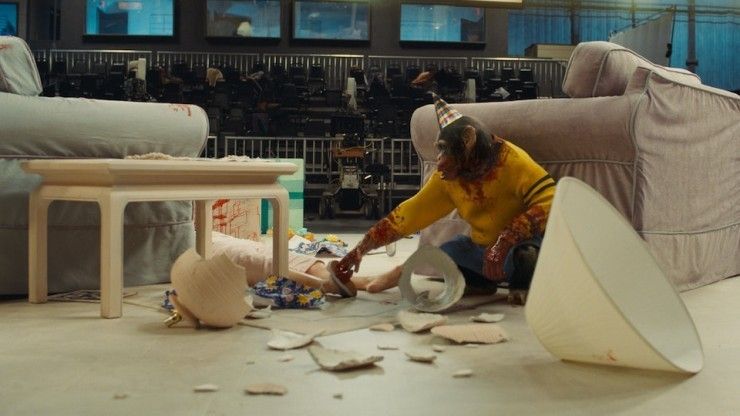
The Nope director and sound designer break down the magic behind their sci-fi sound design.
Jordan Peele’s Nope is a strikingly original take on the familiar sci-fi story, building the suspense through masterful widescreen cinematography and haunting sound design. Following a notable trend of thinking about sound design before principal photography begins, Peele wanted to establish the presence of the UFO, dubbed Jean Jacket, through sound.
Through collaboration with supervising sound editor, sound designer, and re-recording mixer, Johnnie Burn, who is known for his eerie work on the sci-fi film Under the Skin, Peele and Burn found a way to bring Jean Jacket’s presence to the foreground and immerse the audience into the world of Nope.
In an interview with SoundWorks Collection, Peele and Burn discuss the creative process for crafting the sonic world of the film, and how they explore the use of silence, haunting winds, slowed-down peacock vocals, and the startling chimpanzee foley to add to the spectacle Peele wanted to bring to the big screen.
Start with the Script
Many of the visual and sound design decisions were already heavily described in Peele’s script. Peele reveals that visual and sound elements are baked into his stories because they are essential elements in creating an immersive world for audiences.
The sound design helps audiences to suspend disbelief and listen to what makes this world real.
“I felt very strongly that if I could convince an audience that they were in the presence of an unknown, unidentified flying object for real, that would be a worthy cinematic experience that they would have to come to,” Peele told SoundWorks.
Peele wrote the script with the intention of keeping Jean Jacket hidden from the audience, but he wanted the sound design to establish the creature’s presence. Burn picked up on this element of looming danger through Peele’s ability to write sound into the script by using adjectives to describe what the characters are hearing.
Burn believed that something of that size and mastery of the sky would be able to have some control of the elements. Using an arsenal of pre-recorded wind sounds, Burn painted layers of EQ frequencies over different wind sounds to manipulate those particular sounds of musical frequencies to lean into the tone of specific scenes.
The beauty of Peele’s storytelling and Burn’s sound design is their collective focus on subjectivity and finding ways to highlight the perspective of the subject for the audience to view the story from the subject's shoes.
While Peele was able to write a story that showed the entire world from the characters’ perspective, Burn used the sound Peele described in the screenplay to help highlight the right moments in the scene.

Hearing the Unseen
Scores are great at underlining the desired tone of a scene, but environmental noises can do less work and still lean into the same tone.
In the scene when OJ (Daniel Kaluuya) walks into the horse barn at night, the repetitive sound of the sprinkler and the hum of the generator create uneasiness and tension. When the silence kicks in, there is a brief moment of release until the lights and sound of the sprinkler and generator come back on.
Burn discovered that this type of sound design immersed the viewer because they are responding directly to emotions that they are feeling as a raw experience rather than intellectualizing a piece of music.
All the sounds of Jean Jacket disrupt the natural environment and create a faux reality that is slightly off, almost like an alien trying to mimic human nature. Besides using wind sounds to create Jean Jacket's presence, Burn crafted a careful blend of trombones, a peacock, growls, a Moog synthesizer from the ‘80s, and a kazoo to create the sounds of Jean Jacket.

The camera movement and the sound design work hand-in-hand to create a jarring moment of realization when we spot Jean Jacket. Burn’s sound design for Jean Jacket reveals where it is in the sky and the camera spots it as it moves.
Toward the end of the film, Jean Jacket becomes the ultimate predator and announces itself. The sound design of Jean Jacket’s announcement after the Star Lasso Experience showcases the creature’s victory, almost like a taunt with the screams of its victims, before a click into silence. It isn’t unfamiliar, but it is a foreign enough sound that the human brain doesn’t know how to compartmentalize.
The sound design of Jean Jacket has changed, giving the creature personality while establishing its dominance.

Let’s Talk About Gordy
The Gordy's House sequences are painfully patient as we watch Gordy’s attack from the perspective of Jupe (Steven Yeun). The big challenge for Burn was not over-laboring anything and allowing the minimal sound design to overtake the scene.
Peele, who is a massive Spielberg fan, took a trick from his book and used the Jaws theory relentlessly throughout Nope. Peele and Burn understand that nothing is scarier than the image the audience can create in their head, so they leaned into the hidden horror and allowed the sound design to paint a picture in the audience’s imagination.
I think of crafting horror from a child’s perspective, which is often the form of emotional processing we retreat to when watching movies. When you are in a moment of absolute horror and frozen in fear, all you can do is close your eyes and listen for the threat. Allow the sound design to navigate the audience rather than relying on the visuals.
The reality of the sounds of the Gordy’s Home scenes is that carrots and other vegetables are being snapped and stomped on. Foley is about understanding how to manipulate everyday items to emphasize what is happening on screen. It can take a while to find the right elements to create the desired sound, but sound design is all about experimenting and discovering new ways to create the desired effect.

Peele and Burn discovered the boundaries of the sound design of Nope fairly early in the production process, then found ways to make it real.
When we are sitting down to write our next script, think of the sound design and find ways to embed it into the descriptions of each scene.
When it comes time to create the sounds for the project, you will already know what you are looking for and can experiment with your sound designer to create something real within the boundaries of your story. Don’t be afraid to blend different stock sounds or create new sounds to find that visceral and personifying noise that leans into the tone of your story.
Let us know what you think of the sound design of Nope in the comments!
Your Comment